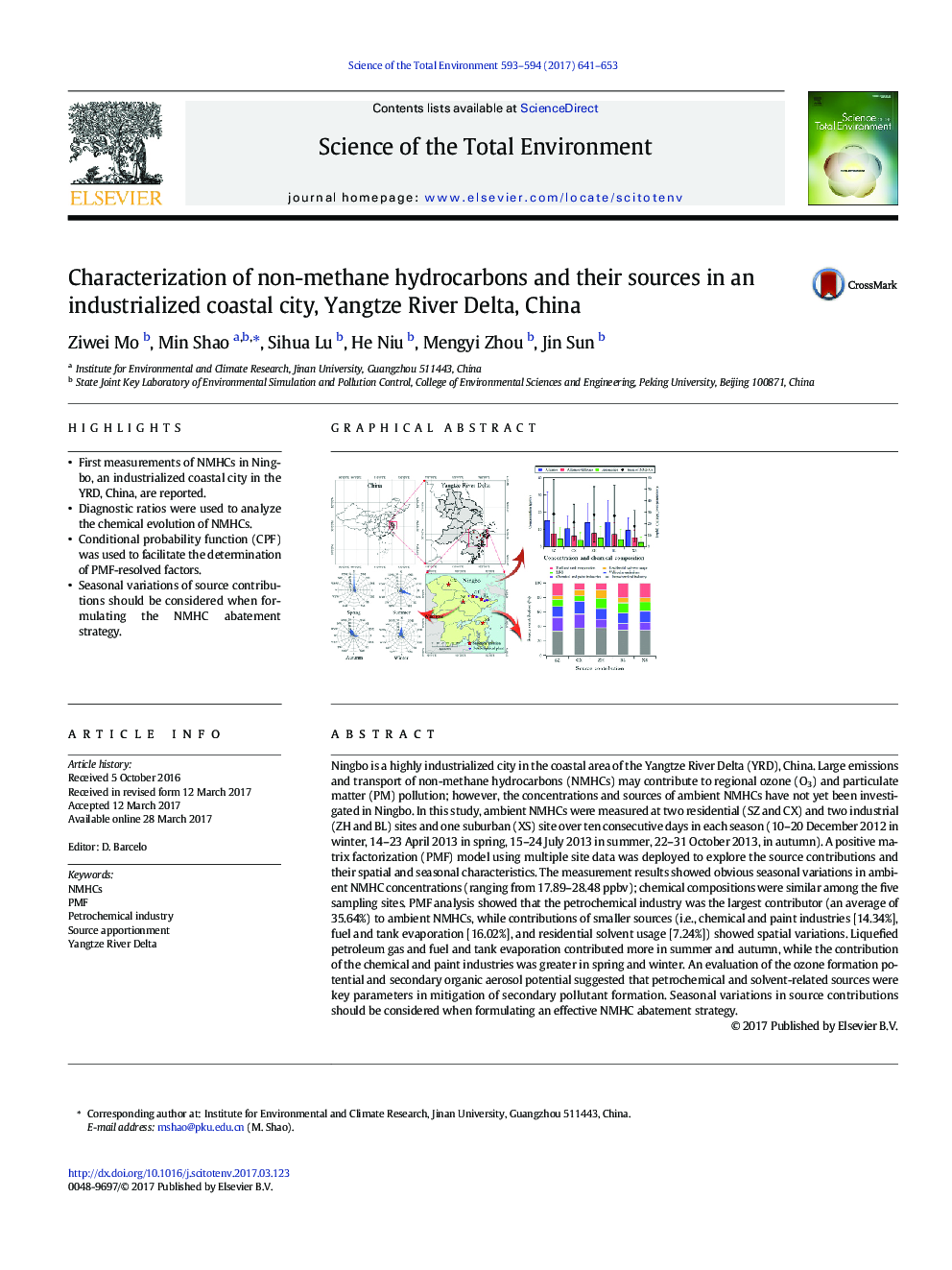| کد مقاله | کد نشریه | سال انتشار | مقاله انگلیسی | نسخه تمام متن |
|---|---|---|---|---|
| 5750893 | 1619702 | 2017 | 13 صفحه PDF | دانلود رایگان |
- First measurements of NMHCs in Ningbo, an industrialized coastal city in the YRD, China, are reported.
- Diagnostic ratios were used to analyze the chemical evolution of NMHCs.
- Conditional probability function (CPF) was used to facilitate the determination of PMF-resolved factors.
- Seasonal variations of source contributions should be considered when formulating the NMHC abatement strategy.
Ningbo is a highly industrialized city in the coastal area of the Yangtze River Delta (YRD), China. Large emissions and transport of non-methane hydrocarbons (NMHCs) may contribute to regional ozone (O3) and particulate matter (PM) pollution; however, the concentrations and sources of ambient NMHCs have not yet been investigated in Ningbo. In this study, ambient NMHCs were measured at two residential (SZ and CX) and two industrial (ZH and BL) sites and one suburban (XS) site over ten consecutive days in each season (10-20 December 2012 in winter, 14-23 April 2013 in spring, 15-24 July 2013 in summer, 22-31 October 2013, in autumn). A positive matrix factorization (PMF) model using multiple site data was deployed to explore the source contributions and their spatial and seasonal characteristics. The measurement results showed obvious seasonal variations in ambient NMHC concentrations (ranging from 17.89-28.48Â ppbv); chemical compositions were similar among the five sampling sites. PMF analysis showed that the petrochemical industry was the largest contributor (an average of 35.64%) to ambient NMHCs, while contributions of smaller sources (i.e., chemical and paint industries [14.34%], fuel and tank evaporation [16.02%], and residential solvent usage [7.24%]) showed spatial variations. Liquefied petroleum gas and fuel and tank evaporation contributed more in summer and autumn, while the contribution of the chemical and paint industries was greater in spring and winter. An evaluation of the ozone formation potential and secondary organic aerosol potential suggested that petrochemical and solvent-related sources were key parameters in mitigation of secondary pollutant formation. Seasonal variations in source contributions should be considered when formulating an effective NMHC abatement strategy.
300
Journal: Science of The Total Environment - Volumes 593â594, 1 September 2017, Pages 641-653
